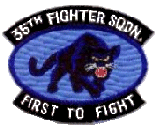by Joe Boyles
A while back, a friend suggested that I write a column about dogs, ‘man’s best friend.’ With the replacement of horses by horsepower, I reckon that dogs are man’s most useful and versatile animal. With that in mind, let me tell you the story of a dog I knew many years ago named Roscoe.
It was late June of 1972 and I had arrived at Korat Airbase in Thailand. I had about 60 combat missions under my belt from three months of arduous flying at DaNang. Shortly after arriving, I was introduced to the mascot of the 388th Tactical Fighter Wing, namely Roscoe.
Roscoe was a yellow mongrel of no particular breed and above average size. He didn’t start his life in Thailand but rather, Okinawa. He was named for an F-105 Thunderchief pilot who died in a landing accident and cared for Major Ray Lewis. Lewis smuggled Roscoe with him down to Korat. On July 20, 1966, Ray Lewis was shot down over North Vietnam and Roscoe became an orphan. (Note: The name of Colonel Merrill Raymond Lewis, Jr. may be found on the Vietnam War Memorial, panel 9E line 048.) Roscoe was promptly adopted by the wing and given the honorary rank of colonel.
Roscoe had two homes – wing headquarters and the officer’s club. Those locations were about a mile apart, but Roscoe didn’t walk from one to the other; he rode. He would stand on the curb and wait for a ride. If you were driving a vehicle and saw Roscoe waiting for his ride, you had better stop. Roscoe didn’t ride in the back either; he rode ‘shotgun.’ Whoever was in the front next to the driver needed to open the door and get out because Roscoe was coming in. That’s just the way it was. The dog was important and he knew it.
Wing headquarters at Korat was a cluster of buildings called Fort Apache. The central building contained Intelligence and our flight planning area. There was one theater-style main briefing room that seated about 80 as I recall. We used it for our ‘mass-gaggle’ Linebacker briefings in 1972 to learn the details of our missions over North Vietnam. On the first row was a seat marked for the wing commander. The seat next to it had Roscoe’s name on it.
The superstition was that if Roscoe slept through the briefing, then it would be a milk run with relatively light enemy opposition. But, if Roscoe was wide awake and alert, look out. Everyone would listen to the briefing, glance at the audio-visuals, and keep an eye on Roscoe. Was the superstition true? I’m not really sure, but … we didn’t leave anything to chance. As I recall, Roscoe slept a lot … which was good.
Roscoe’s other ‘home’ was the officer’s club, and he had plenty of girlfriends (in Thai, known as ‘tee loc’) waiting for him. Roscoe was all male and not shy in the least.
Roscoe had a hankering for ham. So here’s the scenario: I’ve just finished a nice plate of fresh pineapple and now I’m ready for a hearty breakfast of ham and eggs. Just as I’m about to bite into my first taste of ham, I hear a “grrr” not far away. There’s Roscoe next to the table and my ham slice is as good as gone. No use in trying to fight it – the dog had a direct line to the wing commander. Just fork it over and get on with what is left of breakfast. I lost a lot of ham before I figured out that bacon was the answer.
Point of contention here — my good buddy Karl Eschmann claims that Roscoe preferred steak. Maybe he did at dinner, but for breakfast, it was ham. That’s my story and I’m sticking to it. Besides, Karl is an Aggie, so that’s an automatic disqualifier.
A few years later, the war was over and the USAF was pulling out of Korat, turning the base over to the Thai Air Force. What to do with Roscoe? If left behind, he might have ended up in a soup pot! I’m told there was an extensive plan to have him moved through quarantine to Luke Air Force Base just west of Phoenix, but Roscoe died before the plan could be implemented. Too much rich ham I suppose.
I’m told on good authority (Eschmann?) that Roscoe is buried near the front entrance of the O Club and the Thai Air Force faithfully maintains his grave site to this day. I’d end this little tale by telling you that Roscoe was a good dog, but since he didn’t know he was a dog, how can that be? How ‘bout this: he was good people.
For more about Roscoe read “USAF Officer Training School 1970” and “Roscoe – Top Dog at Korat.” A newspaper published a story in 1975 called “Dog’s Death Saddens Pilots.”

Good story, Joe!
I can verify Roscoe’s headstone in front of the KOOM. I met him once on a divert to Korat from Ubon in ’66 while having a beer with Karl Richter. He was a fighter pilot dog.
Joe Lee
Joe,
What a great bit of history. Not sure of the current status of Roscoe’s gravesite, but in 1994, I was in the 44th FS and we went to Khorat for an exercise. One of our first tasks was to repair and re-dedicate Roscoe’s gravesite right there in front of the Thai O’Club. So we did an then had a great big party. I wish we had known then what you wrote here. What a great dog.
Jim “Flav” LeFavor